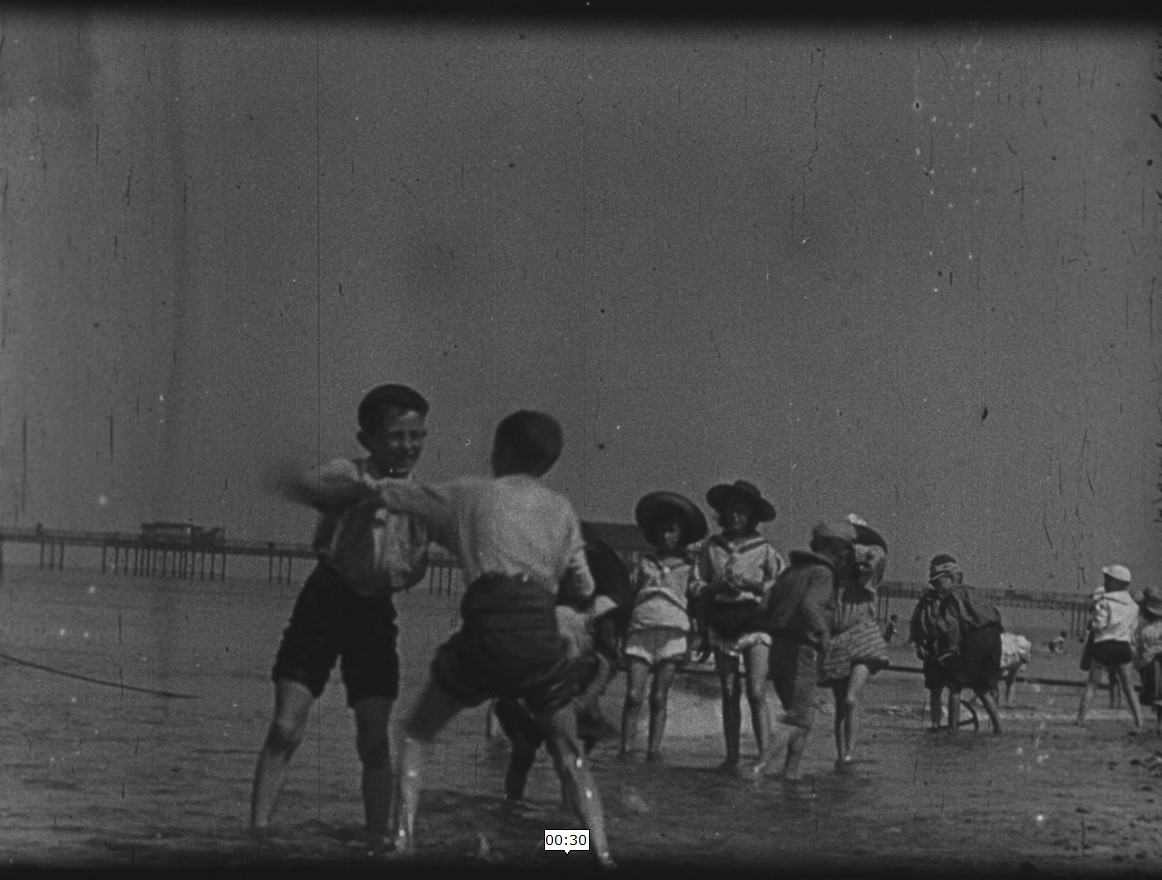A trip to the seaside with Victorians on Film
Films from The British Film Institute - available now in Victorians on Film - offers new insight into our understanding of early film techniques and makes up the most extensive collection of films from the era.
With the closing of the summer season and the move into colder weather in the Northern Hemisphere what nicer way to reminisce about sunnier days than a trip to the seaside. The late Victorians and early Edwardians enjoyed the explosion in popularity of seaside resorts facilitated by the developing railways and the joys of the coast are captured in films featured in Victorians on Film.
The simple pleasure of paddling in the sea is recorded in Children on Beach 1898 (along with the youthful desire for a scrap). Aside from the two boys attempting to soak each other, we’re given a glimpse of the pier at Rhyl, a rowing boat being pulled ashore and the fashions of the children moving about the frame. Both girls and boys wear broad-brim hats with some boys wearing fashionable sailor collars and nautically stripped shorts. This film comes from the Victorian Films Collection and charmingly captures living, breathing people freed from the posed photographs we associate with the time.

Children on Beach (1898), copyright of The British Film Institute
The popularity of the British seaside holiday is intrinsically linked with the industrial towns of the North of England which are recorded in the Mitchell and Kenyon Collection. The railways and the rise of half-day holidays on Saturdays saw an expansion of workers heading to the entertainment of the North-West coast. In Scenes by the Stone Jetty, Morecambe (1902) we are invited to join the holidaymakers on Morecambe beach.

Scenes by the Stone Jetty, Morecambe (1902), copyright of The British Film Institute
The beach scene throngs with well-dressed families, smart hats secured against the breeze which whips the flags visible in the background. All ages gaze into the camera, more boys in sailor suits, men tipping top hats to the camera, women entertaining babies, and even a salesman wearing a baby’s bonnet who appears to be carrying fur stoles. He can be seen displaying his wares to potential customers before emerging from the crown to engage with the camera. These gazes into the lens display the fascination and engagement of the individuals with the camera. Films such as these were created to be displayed in the following days in a local venue allowing those in the films to come and watch themselves on the Big Screen. The gaze of the film’s subjects also invites the viewer to believe they are part of the scene, about to enjoy the entertainment available.
The signs along the beach show some of the attractions on offer and, as with early cinema, these enjoy a position bridging both science and entertainment. In front of a sign for palmistry and phrenology a seated pair seem to be demonstrating phrenology with one man rubbing the other’s head. The ability to discern information about a person’s character through their physical attributes was taken seriously by some sections of the population although this instance suggests a light-hearted application. Behind this board is another sign reading ‘Look Here for a Good Laugh’, below which can be seen a row of kinetoscopes. These early, individual moving-picture viewers were synonymous with risqué seaside humour and create a link to the camera now recording the scene.
Children on Beach 1898 and Scenes by the Stone Jetty, Morecambe (1902) contain many of the themes which run through the Victorian Film and Mitchell and Kenyon Collections. We see leisure activities, the fascination with the camera, social interactions, records of lost architecture, early film technology and, as is often the case, the lively humanity of the faces looking back at us. The playfulness and humour of people recorded is a highlights of the films and these films have this in buckets and spades.
About the author
Sarah Birse is an Assistant Editor at AM.
About the collection
Victorians on Film: Entertainment, Innovation and Everyday Life is out now.
Recent posts

The blog highlights American Committee on Africa, module II's rich documentation of anti-apartheid activism, focusing on the National Peace Accord, global solidarity, and student-led divestment campaigns. It explores the pivotal role of universities, protests, and public education in pressuring institutions to divest from apartheid, shaping global attitudes toward social justice and reform.

This blog examines how primary sources can be used to trace the impact of young voices on society, particularly during pivotal voting reforms in the UK and the US. Explore materials that reveal insights into youth activism, intergenerational gaps, and societal perceptions, highlighting their interdisciplinary value for studying youth culture, activism, and girlhood across history.
